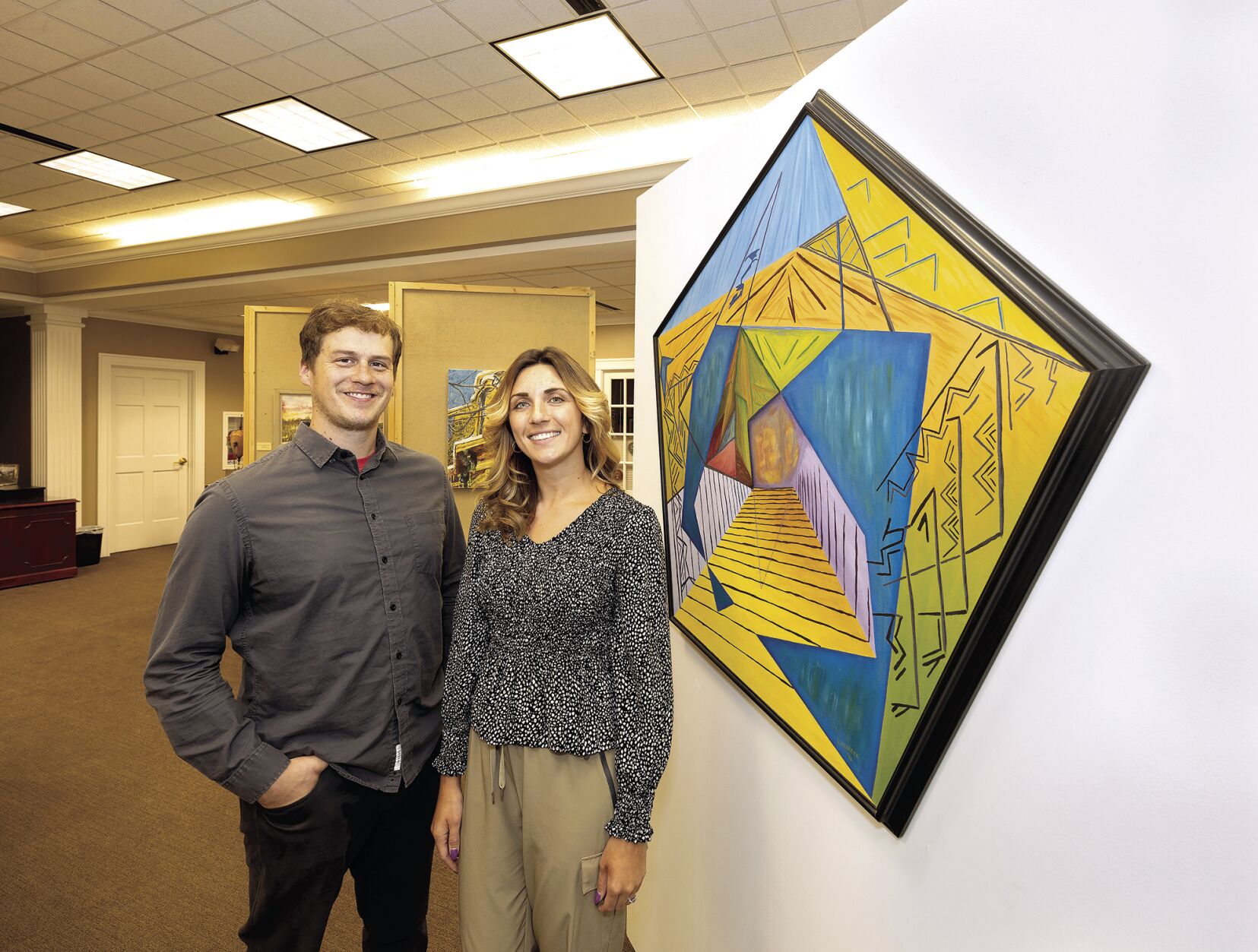Audible Visions: https://bit.ly/3BkQuQG
The Audio Description Project: adp.acb.org
GALENA, Ill. — “Multicolored geometric shapes spiral toward the center. There is not a curved line — only a variety of straight lines and triangles.”
Alison Schoenrock guided a group of people through the gallery.
Listening to descriptions, she asked participants — many of whom were members of Galena Lions Club — to close their eyes. Using carefully crafted words to describe a painting, she invited them to recreate the image in their minds.
“The top left corner is a blue triangle, moving clockwise to green, yellow, white, then orange,” Schoenrock continued. “Within the yellow triangle at the bottom, there are horizontal black lines that ascend toward the middle of the painting, creating perspective. Vertical black lines on either side of the yellow shape create depth and movement forward.
“Moving toward the center, there is a larger, solid blue rhombus that weaves behind the yellow triangle and other multicolored triangles. The perspective sends the focus forward to the center of the painting, where there is a smaller, purple pentagon with gold blended in the center, creating a blurred look, suggesting distance.”
While it’s said that beauty is in the eye of the beholder, Schoenrock hopes the use of such descriptors will offer those who are visually impaired the opportunity to also behold the beauty that might be found in such a work.
The Galena native and her fiance, Shawn Vanderpool, recently founded Audible Visions, a nonprofit organization aiming to create opportunities for those with visual impairments to engage with art, theater, tourism and events throughout Jo Daviess County.
“I think this kind of work is inspiring,” Vanderpool said. “What it does is provide a sense of empowerment for those who are visually impaired to see the art for themselves, the way their mind would visualize it.”
Audible Visions hosted its inaugural event at Galena Center for the Arts this fall.
“It was interesting in the sense that you’d close your eyes and listen to the description of each painting or sculpture,” said Carole Sullivan, executive director of the center. “The insight and words chosen might be things one would never notice in the piece. So even for those without visual impairments, it made you look at the piece differently. But for those with them, to be able to get a sense of the piece and recreate it in the mind is a wonderful opportunity.”
Schoenrock began her studies in psychology at Northern Illinois University in DeKalb, later focusing her efforts on special education and visual rehabilitation.
She became aware of the use of audio descriptions through Audio Description Project, a national initiative of American Council of the Blind that provides audio descriptions for everything from museums, parks and tours to the performing arts.
Many theatrical companies in major cities provide trained audio describers to enhance the experience of live theater for patrons with low or no vision, speaking between lines to describe actions on stage. Television, movies, DVDs and streaming platforms also continue to add audio descriptions to their libraries of titles.
Schoenrock saw an opportunity to bring such an offering to her hometown, enrolling in specialized training that taught her how to craft and deliver descriptions.
“It’s challenging because you have to be careful of using words that would indicate your own perception,” she said. “When it came to where to develop something like this, I got to thinking of Galena and everything we have that those with visual impairments might not be able to enjoy without the use of audio descriptions.”
In addition to Galena Center for the Arts, Schoenrock also is exploring opportunities with Jo Daviess County tourism organizations and hopes to continue branching out to the rest of the tri-states.
Sullivan said it’s a beneficial addition when considering the scope of inclusivity among community offerings.
“Often when we talk about making the arts accessible and representing diversity, we don’t always think about how that incorporates those with visual impairments,” she said. “This enables that population to experience and appreciate the arts as well. I think it’s very positive and shows great potential for our area. It opens the door to anyone living here or visiting to experience and appreciate what we have to offer.”


